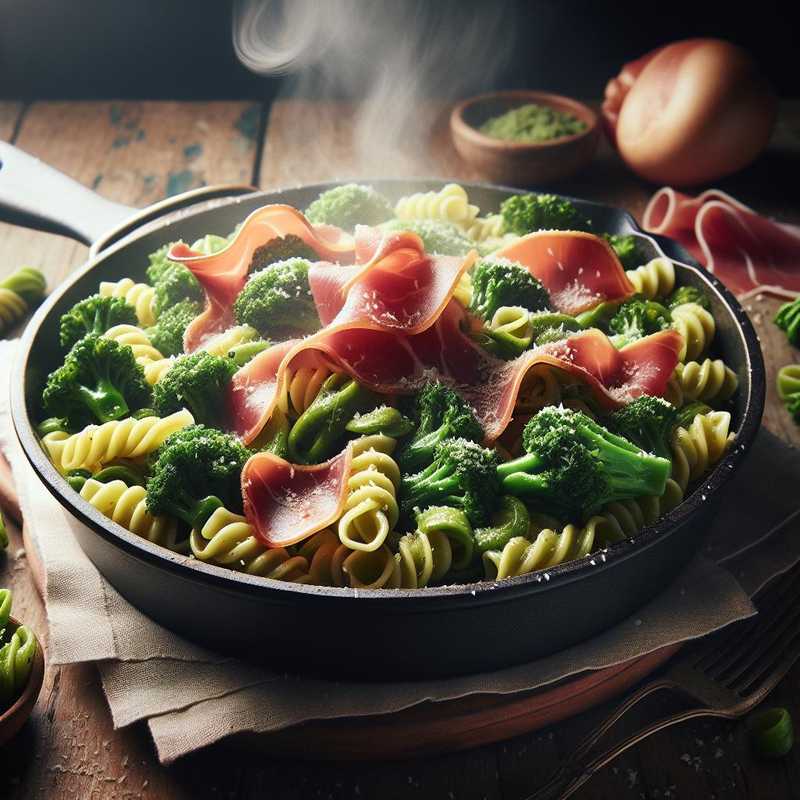Strozzapreti with broccoletti and ham
17/11/2023Here is the recipe for strozzapreti with broccoletti and ham, a simple and flavorful dish that blends the sweetness of broccoletti with the bold taste of ham.
Ingredients
- 320 g of strozzapreti (or another type of pasta at your preference)
- 200 g of broccoletti (you can use broccoli if you prefer)
- 100 g of raw ham cut into strips
- 2 cloves of garlic
- Red chili pepper (to taste)
- 4 tablespoons of extra virgin olive oil
- Salt as needed
- Parmesan cheese (or Pecorino Romano) grated for serving
Preparation
- Start by cleaning the broccoletti: remove the outer leaves, divide into florets, and wash under running water. In a large pot, bring salted water to a boil and blanch the broccoletti for about 5 minutes. After that, drain them and set aside.
- In the same water used for cooking the broccoletti, cook the strozzapreti according to the package instructions to reach an al dente texture.
- Meanwhile, take a pan and heat the extra virgin olive oil with the garlic cloves and chili pepper to your liking. Let it sauté for a few minutes until the garlic is golden. At this point, you can remove the garlic if you want to avoid a too strong flavor.
- Add the raw ham strips to the pan and sauté until they become crispy.
- Add the broccoletti to the pan with the ham and let them flavor for a few minutes, stirring gently to allow the flavors to blend.
- When the pasta is ready, drain it and transfer it to the pan with the broccoletti and ham sauce. Toss everything together for a couple of minutes so the pasta absorbs all the flavors of the sauce.
- Serve the strozzapreti hot and, if you like, sprinkle the dish with grated Parmesan or Pecorino Romano cheese.
For an even more Italian twist, you might use crispy guanciale or smoked pancetta as an alternative to the ham, which will give the dish a more intense and rustic flavor.
Curiosity
Strozzapreti is a type of pasta typical of some Italian regions and is linked to many legends about the origin of its name, one of which tells that it was so good that it distracted priests during meals to the point of choking them. The simplicity of the ingredients of this dish reflects the tradition of Italian peasant cooking, which knows how to transform a few elements into delicious dishes.
